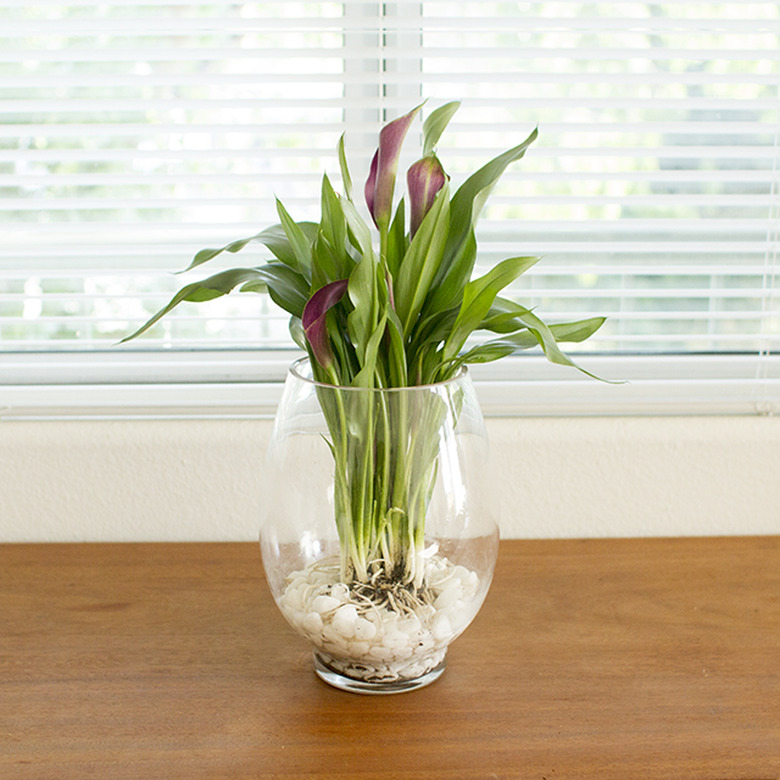How To Grow Bulbs In A Glass Vase
Summer overflows with flowers, all the garden bulbs and bushes blooming in a rush of color and fragrance, with plenty extra for vases to blossom-up the house. But fall follows summer, year after year, and then comes winter. It's during these darker months when the garden has little to offer that a happy bloom would be extremely welcome. That's the time to think about forcing bulbs indoors. If you know the simple technique, you can get a bulb to root, grow and flower in a glass vase indoors to brighten your home any time of year.
Bulbs for Forcing
Bulbs for Forcing
If the term "forcing a bulb" seems a little violent, just think of the name as a shortcut for the process: growing a bulb indoors out of season without soil. It doesn't take much to make this happen, just a vase with a water, a few pebbles; and a little know how. This is more a miracle of nature than a magic trick. Remember that, unlike seeds, bulbs pack into their papery shells all the nutrients they need to bloom, so soil is irrelevant to flowering. On the other hand, the bulbs need soil after flowering to refill the coffers with nutrients to create the next round of beauty.
What bulbs are best for forcing? You can take your pick of the impossibly-easy-to-force hyacinth, narcissus with its seductive fragrance or gorgeous paperwhite. Bright colored tulips, too, can be forced indoors in a vase, as well as daffodils, amaryllis and lilies. In fact, flowers from bulbs grown without soil last longer than cut flowers and do a great job of livening the living room during the dark days of January and February.
How to Get Started
How to Get Started
When you are forcing a bulb, you can go simple or fancy. The simple way to get started is to fill a glass vase two-thirds of the way up with pebbles. Any container will do, but a glass or jar lets you watch the roots develop. For one bulb, make the container at least 4 inches in diameter. If you have a bigger container, you can add two or more bulbs, spacing them by wedging pebbles between them.
Some bulbs, like tulips and hyacinths, need a period of time in a dark, cool areas before forcing. Check the package instructions or ask about your bulbs at the garden store.
Once the cooling period is over, Place the bulbs with the pointed tip up on the top of the pebbles, pushing them in a little so stabilize them. Add water until it just touches the bulb base. Don't be "generous" here, since a bulb even partially submerged will rot.
Place the vase in a bright area and keep the water clean and replenished as roots and shoots grow. In time, the flowers will bloom.
How to Get Fancy
How to Get Fancy
You can spiff up the bulb forcing process without sinking big bucks into the project. One cool accessory is a waisted glass vase. It looks like an hour glass with a top section sliced off. The bulb can sit on the top part of the vase, supported by the "waist." With this type of vase (sometimes called "forcing jars"), you don't have to add pebbles and you get a better view of the emerging roots.
Other upgrades can include using bright colored marbles in the place of pebbles. Some people like to use fine gravel from the pet store instead, but anything works as long as roots can get through.
Don't forget to be kind to your bulbs. Transplant them in soil in the garden after they flower to allow them to recharge for the next year's outdoors flowering. No bulb should be forced more than once.
